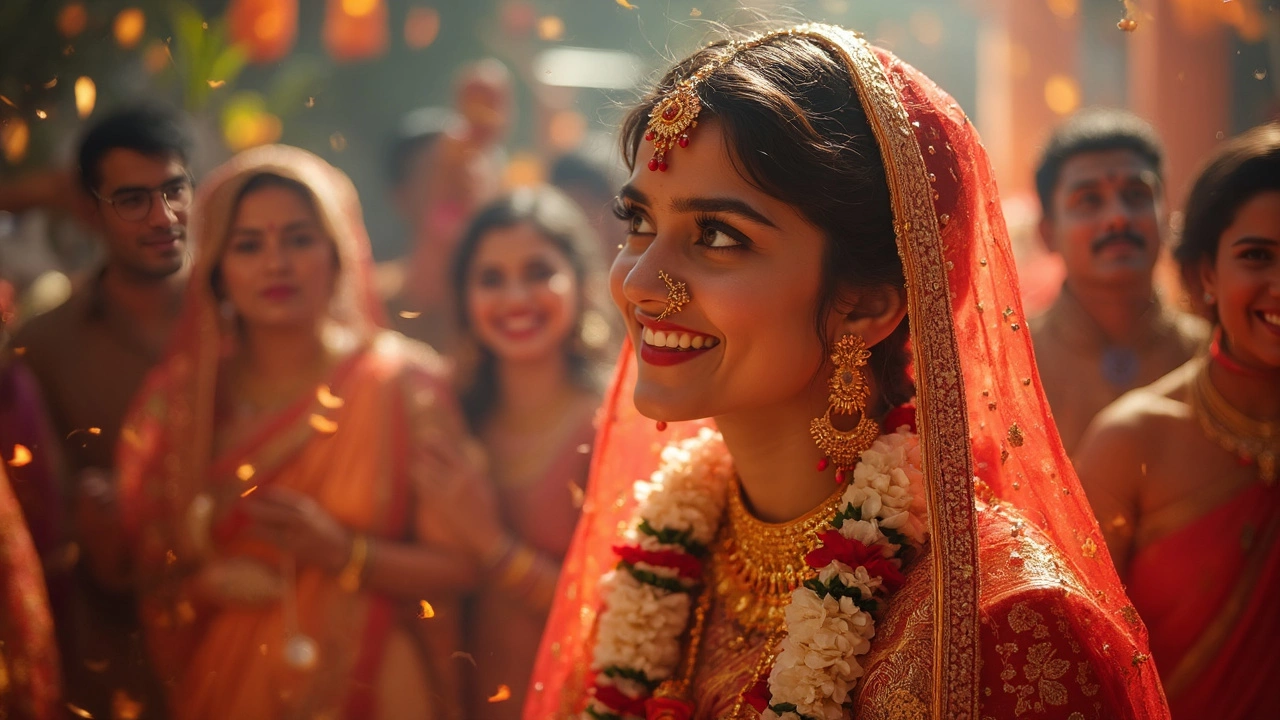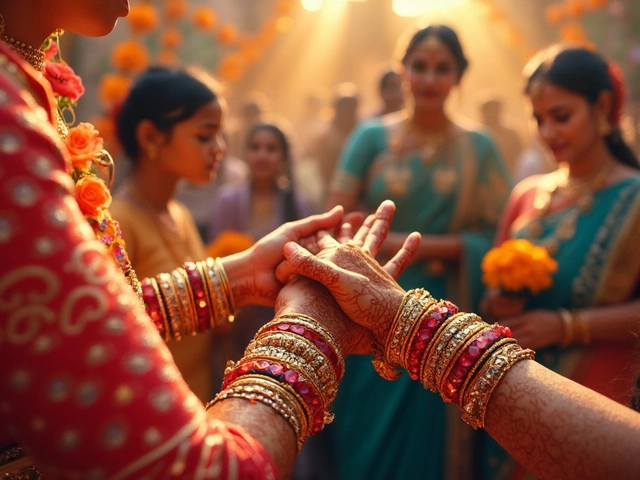Alright, so you've probably seen nose pins everywhere these days, from Instagram influencers to traditional brides, and you've got to wonder—what's the deal with them? Surprisingly, nose pins aren't just about adding a sparkle to your face. They've got some deep-rooted stories and traditions hanging off them, especially in countries like India.
Let's start by rolling back to their cultural beginnings. In many cultures, especially in South Asia, nose pins have been a big deal for centuries. They're usually not just picked out on a whim. For instance, in India, a nose pin can signify a woman’s marital status, and in some communities, it's believed to enhance a woman’s beauty and prosperity. Quite the multitasker, right?
- Cultural Roots
- Evolution of Designs
- Significance in Marital Traditions
- Nose Pins as Fashion Statements
- Spiritual and Health Beliefs
- Choosing the Right Nose Pin
Cultural Roots
Diving into the cultural tapestry of nose pin symbolism, we find a fascinating array of meanings and stories. Nose pins have been around for thousands of years, with a significant presence in South Asian culture. In India, for instance, wearing a nose pin isn't just about style—it's woven into the fabric of societal norms and traditions.
Historically, the nose pin made its way to India from the Middle East via the Mughal Empire around the 16th century. Since then, it became a vital part of Indian bridal attire, often worn on the left nostril. This specific placement is linked to Ayurveda, where it's believed to ease childbirth and menstrual pain. How’s that for practicality?
Beyond utility, the choice of nose pin designs can also reflect one's community and region. For instance, in Maharashtra, a traditional nose pin, or 'nath', is immensely ornate, while in Punjab, the designs are often simpler yet elegant.
In the Middle East and parts of Africa, nose pins serve as an indicator of wealth and status. Families might give them as gifts during weddings and other significant life events. In certain African tribes, the larger the jewelry, the higher the status of the wearer. It’s kind of like wearing your status on your sleeve, or in this case, your nose!
But what about the Western take? In recent decades, the nose pin crossed over into Western fashion as a symbol of rebellion, often challenging mainstream norms. Wearing one could once signal a break from tradition or an affinity with subcultures like punk.
Evolution of Designs
So, how did we go from traditional to trendsetting with nose pins? It's a story that's as much about culture as it is about style.
Back in the day, especially in places like India and Nepal, nose pins were pretty straightforward. You had your basic studs and hoops, typically made from gold, silver, or occasionally adorned with a few precious stones. The designs weren't just for show. They often matched specific cultural and familial motifs, kind of like rocking your clan's emblem.
Fast forward to the 20th century, and we started seeing some changes. As globalization kicked in, traditional nose pin designs began to mix with Western styles. Suddenly, what was once a cultural indicator became a fashion statement worldwide. People began experimenting with different shapes—stars, hearts, intricate filigree patterns. And let's not forget the introduction of materials like diamonds and platinum, which gave nose pins a touch of glam.
- 1970s: Flower child era. Think big, bold gemstone studs. A lot of hippie vibes.
- 1980s-1990s: Punk rock influence means more hoops and edgy designs.
- 2000s: Minimalist trends start popping up, with tiny diamond studs being the 'it' thing.
- Now: Anything goes—from traditional gold to futuristic titanium and everything sparkly in between.
Here’s a fun fact: according to some fashion reports, nose jewelry saw a 40% increase in popularity over the last decade, partly because celebs and influencers made it their own.
As more folks jump onto the nose pin bandwagon, designers continue to up their game. It's kind of like nose pins have become the small accessory with a big personality.
Significance in Marital Traditions
Nose pins have played a pretty significant role in marital traditions, especially in places like India and Nepal. In these cultures, the nose pin or 'nath' isn't just any piece of jewelry—it's a marker of a woman's marital status much like the wedding ring is in Western societies. You might be surprised to learn that these don't just get thrown on at marriage time; they have specific meanings tied to the culture and community the bride belongs to.
For instance, in Maharashtra, a state in India, the 'nath' is part of the bridal ensemble. It's often set with pearls and red stones like rubies. Not just any jewel will do, as each stone is believed to bring different kinds of blessings. As for the size of the nose pin, a larger one is often seen as more traditional, while smaller ones can be more modern.
Why the nose, you ask? Well, it's believed in Ayurveda that the left nostril is linked to reproductive health, so adorning it might help ease childbirth. Sure, it sounds pretty old school, but it's fascinating how these beliefs play a role even today.
Even fashion icon, Sabyasachi Mukherjee once stated,
"The nath is not just an accessory; it carries a lineage of memories and cultural stories passed down through generations."
Outside India, in Western cultures, the meaning might shift a bit, but the sentiment remains. Here, nose pins as part of a bridal look have started catching on, symbolizing uniqueness and a personalized touch to the wedding day.
This all goes to show how a little piece of metal can carry a load of meaning. It's about tradition, beauty, and sometimes, personal rebellion. Plus, it's an awesome reminder of how cultures can influence each other, making something old new again.

Nose Pins as Fashion Statements
Alright, let's talk fashion. Nose pins have totally surged into the scene, becoming a crucial element of some seriously chic looks. They’re everywhere—gracing red carpets, trending on social media, and spicing up everyday wear. The magic of nose pins is their ability to blend into any style, be it boho, edgy, or minimalist.
Now, while some folks just see them as a fun accessory, they pack more than just bling. In places like the US and Europe, sporting a nose pin can mean you're a trendsetter, kinda like wearing the latest sneaker drop. They're a style choice that says, 'Hey, I march to the beat of my own drum!' Whether you’re aiming for an understated stud or a more elaborate hoop, you’re making a clear statement about your vibe.
And honestly, the variety available today is mind-boggling. You can snag nose pins in gold, silver, with diamonds, or even cute little charms. Want something more unique? Custom designs let you flaunt your personality right on your nose!
Nose pin designs aren't just about aesthetics, though. Over time, they've become symbols of individuality and self-expression. Many celebs sport them for that reason alone. Remember how everyone went wild when certain music icons started flaunting nose rings? That's the power of a simple accessory.
Let's not ignore the versatility here. You can pair them with ethnically rich outfits or modern chic attire. It's this flexibility that makes nose pins a favorite among style enthusiasts. Lately, there's been a significant increase in younger crowds rocking them, proving they’re timeless but also trending.
Spiritual and Health Beliefs
So, let’s talk about how nose pins are more than just a fashion piece. It might surprise you to know that they’re believed to pack some spiritual and health benefits too. Different cultures have their own interesting takes on this.
Starting with Ayurveda, which is India’s ancient system of medicine, there’s some interesting stuff going on. According to it, piercing the left nostril can benefit women during childbirth. Pretty neat, right? The belief is that the left nostril is connected to female reproductive organs, and piercing it can ease menstrual pain and help with a smoother delivery.
And then you’ve got spiritual beliefs. In parts of India, a nose pin is seen as a crucial element of wedding rituals. It's thought to ward off evil spirits, bringing good vibes to the newlyweds. This is especially true if it's gold, as many believe gold has its own way of radiating positive energy.
On top of that, the positioning of a nose pin can sometimes align with acupuncture points in Chinese medicine. Piercing these points is thought to help with certain health issues, though there’s still some debate about these claims.
Now, I've seen some unconventional uses too. For instance, people who believe in chakra systems might say that piercing the nose helps with activating or balancing your chakras. And there's a casual belief that getting your nose pierced prevents colds—though, you know, take that one with a pinch of salt.
While all these beliefs can add to the allure of a nose pin, remember that they’re very much part of a cultural tapestry. Whether you buy into the health benefits or not, there’s no denying these little pieces of jewelry have a whole world of stories attached to them.
Choosing the Right Nose Pin
Picking out the perfect nose pin can feel a bit overwhelming, especially with so many cool designs out there. But fear not, there are a few things you can keep in mind to make sure you get just the right one that suits your style, personality, and even your cultural vibes.
First up, consider the type of metal that works best for you. If you're prone to allergies, you might want to go for something hypoallergenic like surgical steel or titanium. Gold and silver are classic choices, and they carry a bit of that traditional charm, especially in cultural settings.
- Design: Whether you're into minimalistic dots or more ornate designs, there's a nose pin for every taste. Look for styles that complement your face shape and personal style.
- Size: If you have a petite nose, a smaller stud might look more proportionate, while a larger statement piece could be your go-to if you're looking to grab some attention.
- Occasion: Think about where you're planning to wear this. A simple stud might be perfect for daily wear, but maybe a sparkling gem would be better for a special event.
You might also want to think about nose shape and the type of piercing you have. Is it a nostril piercing, a septum, or something else entirely? Each one can impact which styles fit best.
For those who love to mix tradition with trends, there are always nose pins that combine modern designs with cultural elements. If you're after something that symbolizes tradition while making a trendy statement, this could be right up your alley.
Lastly, don't forget comfort. It’s gotta be something you can wear all day without thinking twice. After all, a nose pin might be small, but it packs a punch in the fashion and symbolism department.



